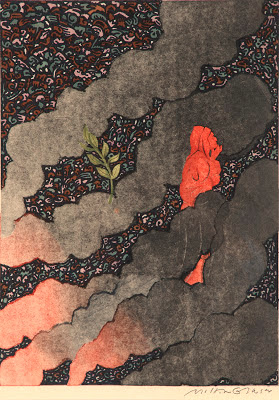DELAWARE EXHIBTION: MILTON GLASER
This is one of a series of posts on the artists featured in the upcoming exhibition at the Delaware Art Museum, State of the Art: Illustration 100 Years After Howard Pyle.Prior to the 1950s, illustration was dominated by artists who visualized narrative passages from a text, employing fairly realistic styles. But by the 1950s, that approach was running out of steam. Traditional illustration was being battered by the rise of photography. Fiction magazines which had been the prime market for illustration ever since Howard Pyle's day began losing circulation. Advertising revenues were shifting to television. In this challenging environment, a new form of illustration emerged.
In 1954, Milton Glaser co-founded the revolutionary Push Pin Studios, a graphic design and illustration firm which had a significant impact on the path of 20th century design. In this and several other influential positions, Glaser employed graphic symbols and visual metaphors to convey ideas, choosing freely from a wide array of styles and techniques. He observed, "It's absurd to be loyal to a style."
No artist has been more eloquent than Glaser in articulating the merger of conceptual design and illustration. It would be difficult to overstate his importance to the field. He has been the subject of one man shows at the Museum of Modern Art in New York and the Pompidou Center in Paris.
I've enjoyed making unkind remarks on this blog about "conceptual" artists who cannot draw and who have no sense of design or composition but who have become emboldened by the excuse that such factors are less relevant today. The focus of art has shifted, we are told, from visual appearance to intellectual content, making the technical skills of yesterday obsolete. These artists would do well to study the work of Glaser. For all that he did to expand the role of concepts in design and move beyond Norman Rockwell's brand of realism, Glaser has never lost sight of the importance of embodying his concepts in beautiful and relevant forms.
These are ample reasons for including Glaser in the centennial exhibition at the Delaware Art Museum, but I would add on a personal note that I especially enjoy the humor and whimsy that Glaser's work has exhibited over his long and prestigious career. Like his fellow New Yorker Saul Steinberg, Glaser (who has been described as an "intellectual designer-illustrator") manages to handle the most profound philosophical concepts with playfulness and simplicity-- a sure sign that he is on the right track.
These and other original works by Glaser will be on display at the exhibition.




